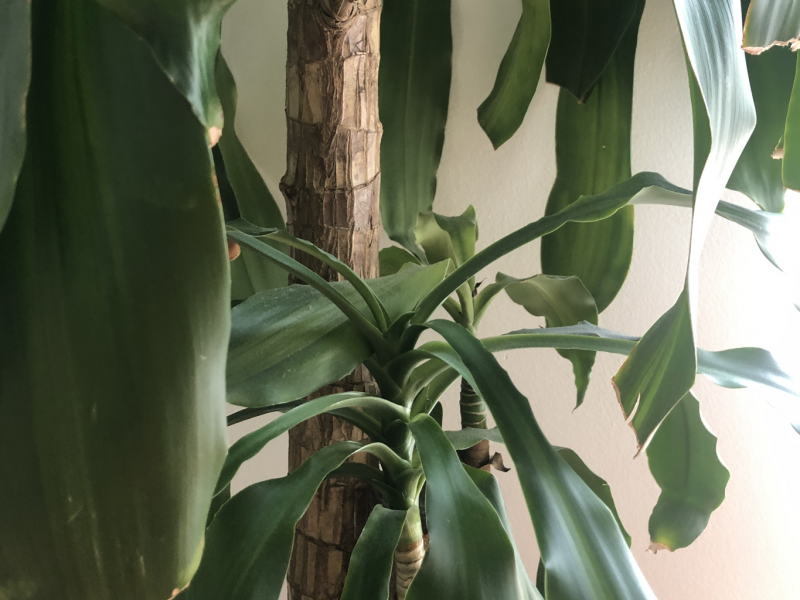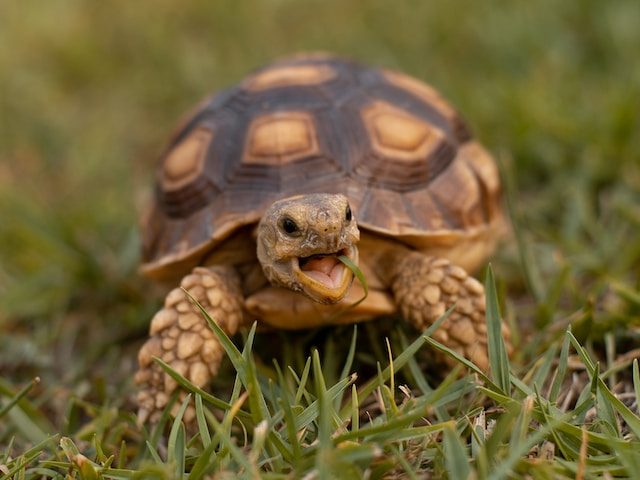
A staple of many homes and offices due to their low-maintenance reputation, the Yucca is actually one of the most popular houseplants out there. Their large striking leaves definitely draw your attention and they are pretty adaptable too which make them almost irresistible. However, don’t think that almost unkillable actually means unkillable because if not given the right care and environment, your Yucca may start to show signs of unhappiness, often in the form of yellow leaves.
Yellow leaves aren’t always something to worry about but it’s crucial that you figure out what is causing the yellowing so you know whether or not to act on it. Below we will be going through all the common causes of yellow leaves on Yucca plants and it should help you bring your plant back to full health.
Overwatering is a common cause of yellow leaves
If the leaves on your Yucca have turned yellow you may be overwatering your plant. Another thing to look out for that is caused by overwatering is whether those yellow leaves are starting to drop from the plant. It may take time for them to fall off (if the problem is relatively new) or they might fall off regularly from your Yucca if things have progressed.
Overwatering is one of the main killers of Yucca plants as you might not always be able to tell before it is too late. Yuccas don’t like to be sitting in a lot of water for long periods of time so overwatering or a lack of drainage can start to cause real problems, not just yellow leaves.
Soggy soil can quickly lead to root rot meaning the plant becomes unstable and also cannot get needed nutrients from its root system. Waterlogged soil gives off quite a damp and musty smell so make sure to check this every so often too as this may start to happen before your Yucca develops visible yellow leaves.
To check whether too much water is the cause of the yellow leaves on your Yucca, check the moisture levels in the soil and adjust your watering routine. This can be either cutting down how often you water your Yucca, or how much water you give it each time.
The most reliable way to know if your Yucca needs watering is by using a moisture meter. We also recommend replacing the potting soil straight away (rather than waiting for it to naturally dry out) so that the roots can begin to recover. Always use a high-quality potting mix to make sure your Yucca is getting the right balance of nutrients. Cut the rotten roots and dead yellow leaves off your plant so that your Yucca focuses on growing new healthy green leaves.
Sunburn can also cause yellow leaves
Lighting is also a really important factor to consider when caring for your Yucca. If the leaves are getting too much direct sunlight each day they will start to burn and you will notice yellow patches starting to develop. This is due to the intense sunlight scorching the leaves.
If your Yucca is suffering from sunburn, then you’ll notice the yellow patches form on the side of the plant that is closest to the window. Often, the shadier side will look healthier. This problem will most commonly happen in summer, as the sun is not only out for longer each day, but the rays are a lot more intense than in winter.
If this has happened to your Yucca then move it to a spot in your home that doesn’t get any direct sunlight. They like bright light but it has to be indirect. We recommend removing the scorched leaves from the plant to encourage new healthy growth (and it looks better too!).
A lack of sunlight
As well as too much sunlight, not enough can also cause some yellowing in the leaves of your Yucca. However, it is mostly paired with small leaves and leggy or stunted growth so watch out for any of those warning signs too. This issue happens mostly during winter where the sun is weaker and out for less of the day.
If you suspect that a lack of natural sunlight is the cause, start by placing your Yucca nearer to a window. If this happens during winter, you can get away with placing it right by the window as the direct sun rays won’t be as intense as in summer. However, during summer, you’ll want to be a little more cautious as to how much extra sunlight you give your Yucca as too much light can also bring a range of issues as we explain next!
You can also use an LED grow light to supplement the amount of light that your Yucca is getting. They can be a real game-changer in preventing yellow leaves and boosting growth levels for all of your plants over the dark winter months.
Spider mites can also be causing the yellow leaves
A slightly rarer cause of yellow leaves on your Yucca is a pest infestation, most commonly spider mites when you have this problem with Yucca plants. Spider mites will suck on the leaves of your plant, exhausting them and causing them to turn yellow. As Yucca plants have quite large thick leaves, this can take longer compared to more delicate plants which can sometimes mean you spot the problem when it has advanced quite far.
Whilst an infestation is more common when the plant is struggling due to the wrong environment or care, it can happen to a plant in good health too if you’re unlucky so it’s an important one to rule out if you spot yellow leaves.
Most pests are visible to the human eye so we can catch the problem by properly inspecting the leaves. Check the undersides of the leaves carefully as this is where the unwanted visitors like to hang out! If you spot pests lurking on your plant the first thing to do is isolate your Yucca from all of your other houseplants. Pests can easily jump across plants if the leaves are touching so you want to avoid the insects spreading to any of your other plants.
The next step is to then trim off all badly affected leaves to curb the growth of the infestation. Then give your plant a wash down in the sink or shower and treat with an insecticide or neem oil.
Natural ageing process
If it’s only the oldest top leaves on your Yucca that are turning yellow then this may be simply natural ageing. Over time, your Yucca will drop some of its oldest leaves in favour of growing bigger healthier new ones, this is just your plant’s natural process.
The rate of natural ageing should be about 1 or 2 of the oldest leaves every few months and should never match or be more than the rate of new healthy green growth. If your Yucca is developing yellow leaves at a faster rate, there might be something not quite right and we recommend going through the above causes to see what is happening to your Yucca.
Those are the most common reasons why Yucca plants develop yellow leaves. It’s important to establish whether or not it is natural ageing so you only change the care routine or environment if necessary. Once you have made any adjustments, keep a close eye on your Yucca for a few weeks to make sure that no more yellow leaves are developing and you can’t see any other signs of unhappiness.
To learn more about how to best look after your plant, check out our Yucca care guide.














